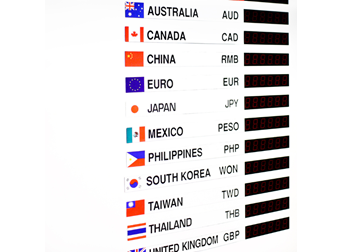Three Cost-Effective Ways To Send Money Internationally in 2023
If you ever tried to send money overseas, you may have discovered that the final amount reaching the destination was much smaller than anticipated. The unpleasant surprise especially hurts when it means less money for your loved ones or if it deals a blow to achieving your big dreams abroad — be it a retirement, international education or a destination wedding.
After some research and countless calls to your bank or payments provider, you realize that there's more going on behind the scenes in international money transfers than you thought.
Understanding these complexities is essential for choosing the most cost-effective international money transfer option.


Why Cost Matters in International Money Transfers
The costs involved in international money transfers can be substantial. They mainly depend on the exchange rates and transfer fees.
An exchange rate is the rate at which you can exchange one currency for another. You can look at it as just another price: the value of one currency expressed in terms of another.
This value can fluctuate over time, sometimes widely, which can significantly impact the amount the person on the other side of the transaction will receive. This is particularly true for larger amounts, where small variations in exchange rates can result in significant differences in the final amount received.
Transfer fees can also significantly affect the transfer amount. Transfer fees are charges that money transfer providers impose for transferring funds from a sender to a recipient. They can vary widely depending on the transfer method and the provider.
For example, traditional financial institutions like banks typically charge higher fees than alternative providers, including online platforms and specialized money transfer companies.
Hidden Costs to Watch Out For
When sending money abroad, it is essential to unveil the hidden layers of costs, such as currency conversion charges, intermediary bank fees and recipient fees, because these add up quickly.
Currency conversion charges are fees that financial institutions impose for converting one currency to another. They can be expressed as a percentage of the transaction amount or a flat fee.


Since international money transfers sometimes involve several intermediary banks across different countries, each will charge its own fee to the recipient, called an intermediary bank fee.
After an intermediary bank sends the remaining amount to the receiving bank, the latter will often charge a recipient fee. So, shop around and get quotes from multiple financial institutions, making sure to account for all these layers of costs.
Remember that your money transfer provider won't be able to tell you how many banks will be involved in the transfer and how much they will charge, so the amount the recipient will ultimately get is difficult to predict.
Here are the least expensive ways to send money internationally:
1. Bank Transfers
The advantages of using traditional banks for international money transfers include accessibility and familiarity since most individuals already have an established relationship with a bank. Also, banks will typically offer a broader range of transfer methods, leveraging an extensive international network of correspondent banks that can act as intermediaries across the globe.
On the downside, they tend to charge higher fees and offer less favorable exchange rates than the following methods. Due to their lengthy processing times, they may not be the best choice for urgent transfers. Bank transfers are suitable for individuals who prefer in-person transactions with access to customer support or those with limited online options. They are also appropriate for larger transactions, like paying for a property abroad, where regulatory compliance is essential.
2. Online Payment Providers
Online payment providers offer quick and convenient transfers at competitive exchange rates and with easy tracking of transactions. The downside is that they are not available in all countries. Since they offer faster transfers, payment platforms are suitable for small to medium-sized, time-sensitive transactions when quick delivery is a priority.
They are also a good match for users comfortable with online transactions who seek ease of use and convenience.
3. Peer-to-Peer (P2P) Transfers
P2P transfers allow you to send money instantly, directly from your account to another through your smartphone. If you ever split the check for dinner, that was probably a P2P transfer.Ideal for smaller payments requiring instant delivery, they are suitable for regular transfers between trusted parties, like family or friends.
The downside is that both the sender and receiver must have P2P accounts. They may also not be as widely accessible as banks.
How Moneycorp Offers Value
As an established payments provider, we use a proprietary multilingual platform for corporate and private transactions to offer customers a quick and convenient international money transfer experience. Unstable fintech startups don't have the experience or reliability that we maintain.
Our new state-of-the-art transaction monitoring and alert system is designed to give our customers peace of mind that their funds are safe with us.


Get the Most Out of Your International Money Transfer
Today, there are many ways to send money overseas, but they are not all created equal. When you send money abroad, navigating the complexities of this process — from ambiguities such as fees and transaction times to uncertainties such as exchange rate fluctuations — can be daunting.
If you are trying to select the most cost-effective way to send money internationally but feel overwhelmed by the intricacies of international money transfers, we are here to help.
Take advantage of our competitive rates by leveraging a panel of more than 16 banks.